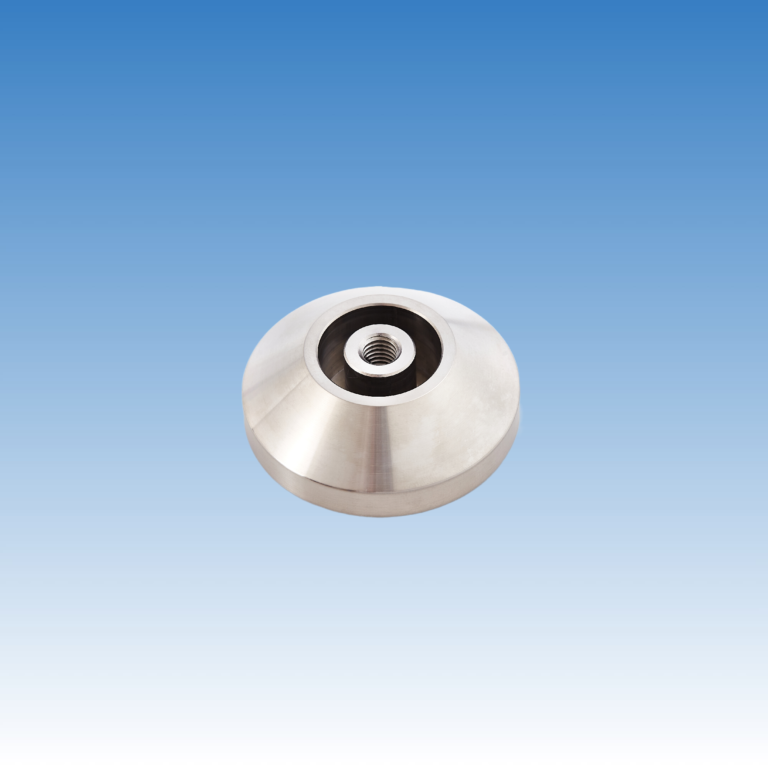Introduction
Stainless steel is widely used in modern industrial manufacturing due to its excellent corrosion resistance, mechanical properties, and broad range of applications. AISI 303 and AISI 304 are two of the most common grades of austenitic stainless steel, differing in chemical composition, mechanical properties, and machining characteristics, making them suitable for different applications. This article provides a detailed comparison of AISI 303 and AISI 304 in terms of material properties and analyzes their specific application fields.
Ⅰ. Comparison of Chemical Composition
Both AISI 303 and AISI 304 belong to the 18-8 austenitic stainless steel category, containing approximately 18% chromium (Cr) and 8% nickel (Ni). However, AISI 303 contains added sulfur (S) to improve machinability, whereas AISI 304 does not, resulting in better corrosion resistance.
| Element | AISI 303 (%) | AISI 304 (%) |
| Carbon (C) | ≤0.10 | ≤0.08 |
| Manganese (Mn) | ≤2.00 | ≤2.00 |
| Silicon (Si) | ≤1.00 | ≤1.00 |
| Phosphorus (P) | ≤0.045 | ≤0.045 |
| Sulfur (S) | 0.15-0.35 | ≤0.030 |
| Nickel (Ni) | 8.00-10.00 | 8.00-10.50 |
| Chromium (Cr) | 17.00-19.00 | 18.00-20.00 |
| Nitrogen (N) | ≤0.10 | ≤0.10 |
Ⅱ. Comparison of Mechanical Properties
Due to the presence of sulfur in AISI 303, its mechanical properties differ slightly from those of AISI 304.
| Property | AISI 303 | AISI 304 |
| Yield Strength (MPa) | ≥205 | ≥205 |
| Tensile Strength (MPa) | ≥500 | ≥515 |
| Elongation (%) | ≥35 | ≥40 |
| Hardness (HB) | ≤230 | ≤201 |
AISI 304 has slightly higher tensile strength and elongation, whereas AISI 303, due to its sulfur content, has higher hardness but lower ductility.
Ⅲ. Comparison of Machinability
3.1 Machinability
AISI 303, with added sulfur, significantly improves machinability, making it ideal for automated machining, turning, and milling. It is commonly used for manufacturing precision components requiring high machining efficiency, such as screws, nuts, and gears.
In contrast, AISI 304 has poorer machinability. It is prone to work hardening during turning and drilling, leading to faster tool wear. High-performance cutting tools and coolants are required to improve machining efficiency.
3.2 Weldability
AISI 304 has excellent weldability and can be welded using TIG (Tungsten Inert Gas) or MIG (Metal Inert Gas) welding without significantly affecting its corrosion resistance.
AISI 303, however, is not recommended for welding due to its high sulfur content, which increases the risk of hot cracking. If welding is necessary, preheating and post-weld treatments are required.
Ⅳ. Comparison of Corrosion Resistance
AISI 303 has lower corrosion resistance than AISI 304 due to its higher sulfur content, which makes it more susceptible to pitting and intergranular corrosion, especially in chloride-rich environments (e.g., marine environments and high-humidity conditions).
AISI 304 exhibits excellent corrosion resistance in most environments, making it ideal for applications requiring high resistance to oxidation and corrosion, such as food processing equipment, chemical containers, and medical instruments.
Ⅴ. Typical Applications
5.1 Applications of AISI 303
Due to its excellent machinability, AISI 303 is commonly used for manufacturing precision-machined components, such as:
- Precision fasteners (bolts, nuts)
- Gears and bearings
- Valves and fittings
- Small components in electronic devices
5.2 Applications of AISI 304
AISI 304’s superior corrosion resistance and good mechanical properties make it widely used in:
- Food processing and storage equipment (dairy, beverage, and brewing industries)
- Medical instruments (surgical tools, implants)
- Chemical containers and pipelines
- Kitchen equipment (sinks, cookware, cutlery)
- Architectural and decorative materials (railings, guardrails)
Ⅵ. Selection Recommendations
- If the primary requirement is high machining efficiency and corrosion resistance is not the highest priority, AISI 303 is a suitable choice for machining industries such as precision fasteners and gears.
- If superior corrosion resistance and weldability are required, AISI 304 is a better choice for food processing, medical devices, and construction materials.
Ⅶ. Future Development Trends
With increasing environmental and corrosion resistance requirements, AISI 304 remains the mainstream material, while AISI 303 may face competition from alternative materials due to its high sulfur content in regions with strict environmental regulations.
Furthermore, advancements in stainless steel alloys may lead to the development of improved materials that combine the machinability of AISI 303 with the corrosion resistance of AISI 304, catering to a broader range of industrial needs.
Ⅷ. Conclusion
AISI 303 and AISI 304 differ in composition, mechanical properties, machinability, and application areas. AISI 303 is ideal for high-precision machining applications, while AISI 304 is preferred for corrosion-resistant and weldable applications. Choosing the appropriate material ensures an optimal balance between performance, cost, and manufacturing efficiency.


